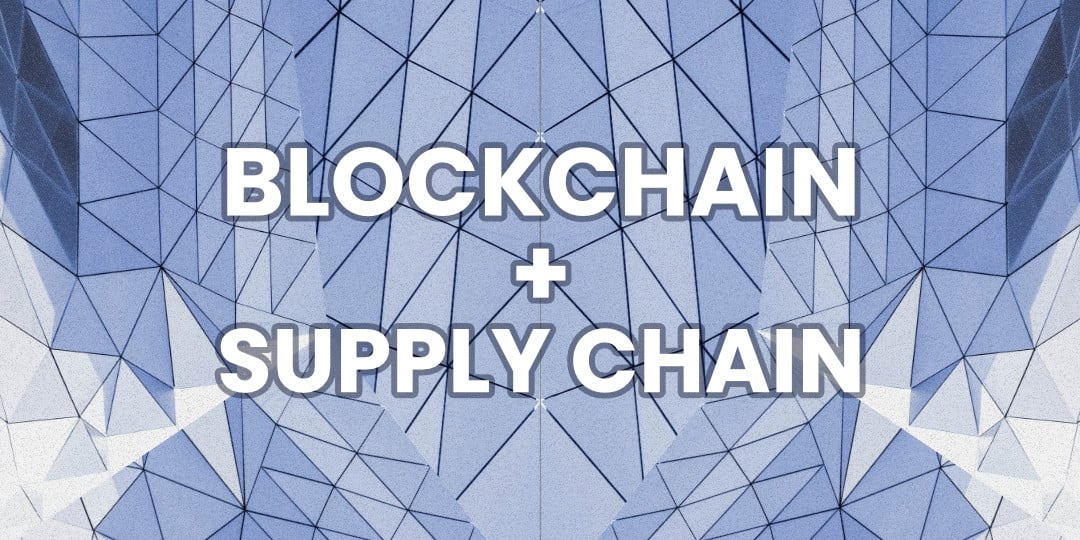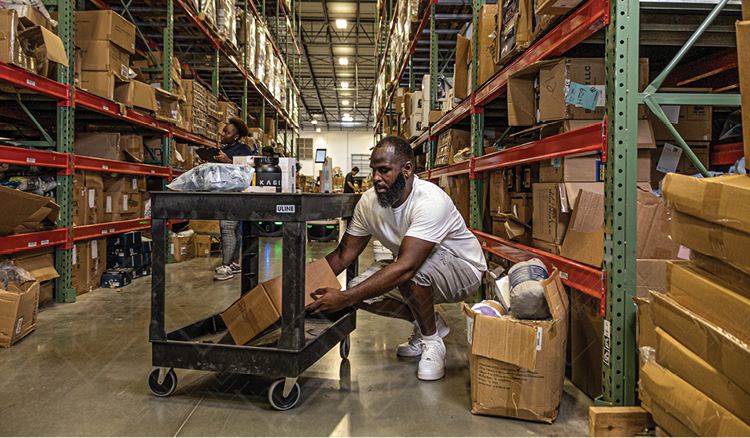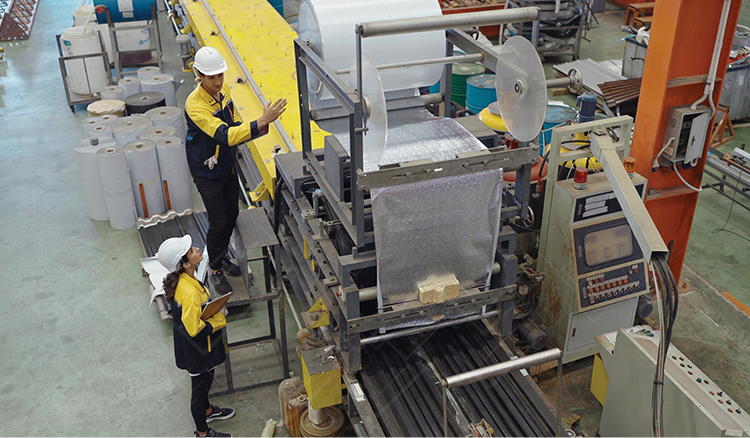Blockchain in the Supply Chain: Procure or Pass?
Blockchain has been a hot topic since 2017, although most probably know about the technology because of the craze around cryptocurrencies. However, companies have started to pursue other uses for the technology in supply chains, such as material tracing. You might have heard of big players such as Walmart using the blockchain to trace food, but what does this mean for small businesses in the supply chain?
Table of Contents
- What is the blockchain?
- Is blockchain useful in the supply chain?
- Benefits of the blockchain
- Cons of the blockchain
- Who would benefit from the blockchain?
- How can small businesses use the blockchain?
- How much does blockchain technology cost?
What Is The Blockchain?
The blockchain is not a single object, but rather a concept. A blockchain is a decentralized ledger that verifies events through nodes on a network running the same blockchain software. Cryptocurrencies like Bitcoin and Ethereum are built on blockchains, but currency is not the only function of blockchains. There are many blockchains, each with different purposes and functionality, but they all maintain a core focus on security and immutability of the events they record.
Another way to think about a blockchain is that it is a way to verify events through automated consensus mechanisms. You could say it digitally establishes trust, and removes middlemen in the process.
Whereas before you would have needed a bank to verify that a customer has the required money in their account to pay you, the blockchain could verify their balance automatically. While this doesn’t sound that important if you can process a payment in seconds either way, the implications of the removal of centralized verification are far reaching. Without the overhead of hundreds of financiers, payment fees could lower to the point of being negligible. Apply this decentralized verification mechanism to many other database functions, and you could see massive cost reductions while actually improving the trustworthiness of the information.

Is Blockchain Useful in the Supply Chain?
Companies have already used blockchain technologies in the supply chain to trace produce, wine bottles, clothing, and, of course, transactions. One theory is that the blockchain removes the need for a central authority to maintain the ledger, thus removing the ability of third parties from outside the supply chain to extract surplus from the value chain.
Other theories tout the benefits of supply chain visibility, easier access to financing for small businesses, improved compliance record-keeping, and improved efficiency through better interoperability.
Thought leaders in the space commonly theorize that the best fit for the supply chain would be a permissioned blockchain, which means that there are different user types with different levels of access to the information (e.g. prices, quantities) and functionalities (e.g. read, access, write) in that specific blockchain.
Benefits of Blockchain For Supply Chain Companies
The immediately apparent benefits of blockchain in the supply chain are:
- Improved visibility
- Immutable records of transactions
- Rapid processing of complex transactions via smart contracts
- Interoperability while maintaining privacy controls
- Automated transaction execution via smart contracts (e.g. trigger orders)
Another way of viewing these benefits is by categorizing them into three main ideas. With adoption of the blockchain, the supply chain could see improved traceability, transparency, and tradeability.
Traceability will enable companies (and potentially their customers) to see where in the supply chain their products are at any time. This will improve decision-making and help businesses distinguish themselves through their sourcing decisions.
Transparency is tied to the first point on traceability, but goes much further. With increased transparency, compliance becomes more efficient, audits are faster, and trust is easier to build.
Tradeability is a new concept that is unique to the blockchain. Imagine a future where you can rent out your underutilized equipment on demand through the blockchain. You wouldn’t have to move the asset, and the blockchain could trace which products were made on that machine during the renter’s allotted time. You would be paid for the time and wear on the machine and benefit from full utilization, while the other company would still be able to trace their products and benefit from the incremental use of the machine. This will create new efficiencies that we cannot achieve today with traditional ledgers, invoices, and software.
Cons of Blockchain For Supply Chain Companies
- Opaque setup processes
- Potentially costly implementation
- Full realization of benefits requires multiple participants
- Current solutions are “good enough” for most companies
Who Would Benefit From The Blockchain?
Companies with complex chains of sources for materials and with regulatory hurdles would benefit from blockchain technology the most. You can see this in the size of the companies that have been featured as case studies for blockchain solutions providers such as IBM.
Small businesses can benefit from the blockchain, too. Joining a blockchain focused on supply chain solutions would enable them to gain visibility and improve their interoperability with other companies using the same blockchain. It could also help them verify their financial information with lenders so that they gain easier access to capital. The business’s possession of verifiable transactions with multiple other parties on the blockchain could improve the lender’s confidence that the small business is able to pay back the loan.
How Can Small Businesses Use the Blockchain?
Small businesses stand to gain more than just easier access to capital from the blockchain. There are many benefits of the blockchain for small businesses, which has everything to do with its decentralized nature.
Small businesses can use smart contracts to create enforceable agreements that automatically execute between them and their customers/suppliers. While the costs to deploy a smart contract vary, if the terms of the smart contract are relatively simple and they are used frequently, they can create significant cost savings for everyday situations that would have otherwise required an expensive attorney’s fee to create an agreement.
Small businesses can also leverage the decentralized nature of the blockchain to gain parity regarding symmetry of information. Instead of handing over their data to a centralized gatekeeper in the cloud, they could trust that their information is secure on the blockchain, and they retain a copy of the ledger for their own uses by default. They also have the same amount of public data that everyone else on the blockchain does. Rather than requesting their data from a central figure, they have a copy of their data by default and have it verified by the blockchain.
How Much does Blockchain Technology Cost?
Blockchain technology implementation costs can vary. If you work with an enterprise partner like IBM or another specialized consultant, you will likely pay enterprise prices. If you use an open source solution like Hyperledger, you would theoretically only incur the costs of developing and deploying your own blockchain solution.
To build and maintain your own simple solution using Hyperledger, for example, could cost $313,000 in the first two years, with diminishing costs after the initial setup. This assumes that you hire a single developer to get your blockchain set up. Perhaps you could find a creative solution for covering the costs and performing the work of developing this instance by partnering with others in your supply network.
To calculate the cost of developing your own solution, you can use some existing data from around the Internet. The average blockchain developer’s annual salary is $154,000 according to Ziprecruiter, and according to Kubecost the average annual cost of hosting data on-premise is around $2,500 using Kubernetes, the deployment method recommended by Hyperledger. If you spread the cost of the implementation over five years and assume that you’ll only pay the developer during two years of development and stabilization of the system before contracting the system maintenance work as-needed, you would likely end up with an ongoing annual cost around $41,000.

Blockchain and Labor in the Supply Chain
Improvements in efficiency sparked by the supply chain would align with the aims of labor capacity optimization. On-demand labor operates with the same imperative: make decisions based on real-time information to gain flexibility and agility while maintaining reliability.
Workers in the supply chain would also benefit from a blockchain solution that allows them to tie their work to their quality output. For example, a worker could associate themselves with a specific workstation and all the products that came through that workstation that day. This would allow them to showcase the quality and volume of their work, and be paid accordingly. It would also allow them to maintain a verifiable record they could take with them to other companies to showcase their skills, so they can continue to pursue opportunities to increase their earnings and grow their skill set.
We believe in the importance of a skill-based, verifiable resume for workers. We have created a meritocratic rating system on our platform that accomplishes this using the proven technology platforms that are widely accepted today. Read our article on the ratings and review feature of Veryable’s on-demand labor marketplace to learn how transparency benefits businesses and workers.
Previous Posts
How Policy Constraints, Not Just Production Bottlenecks, Threaten Your Bottom Line
The Future of Manufacturing and Logistics
Create a free business profile today to explore our platform.






